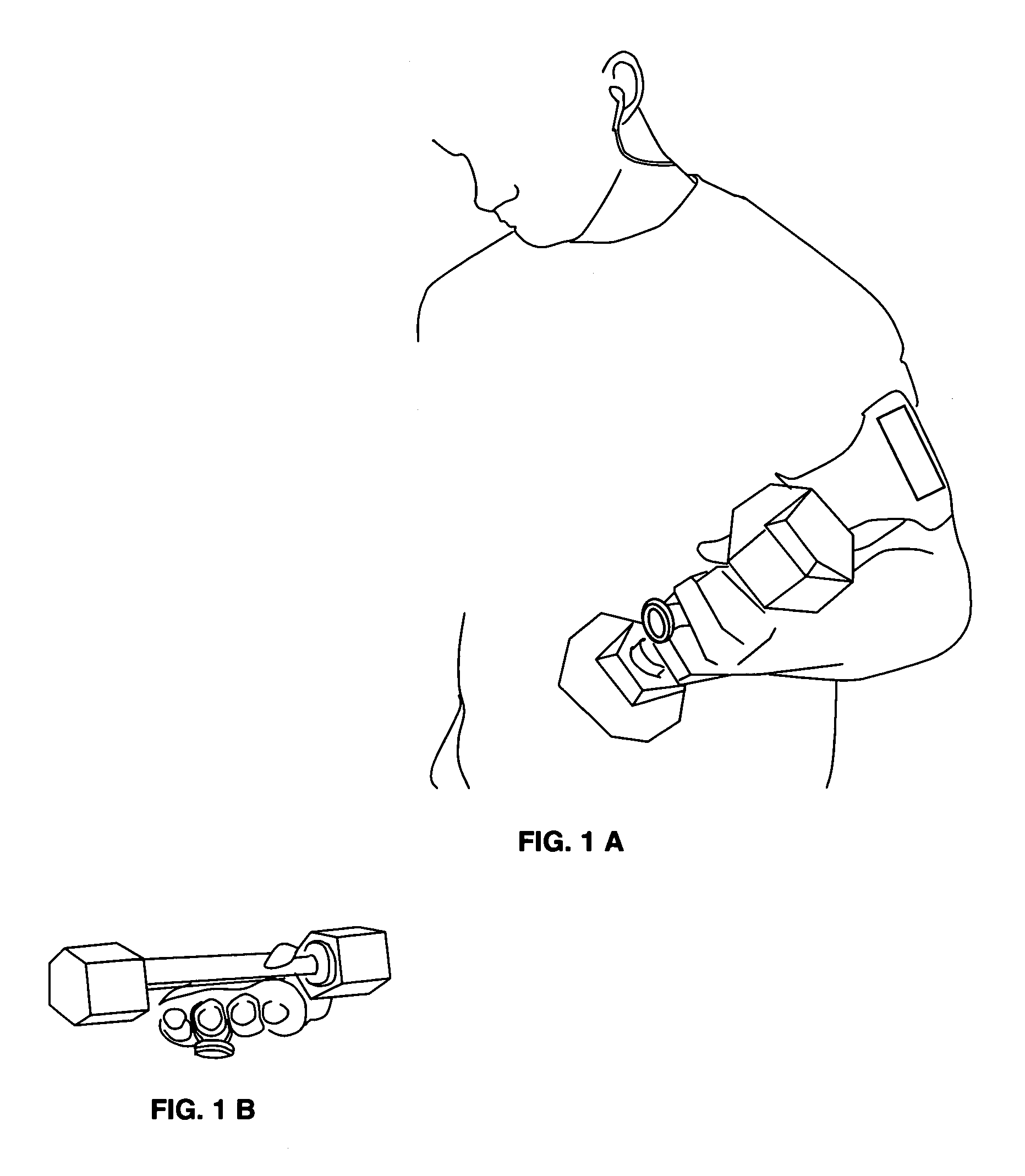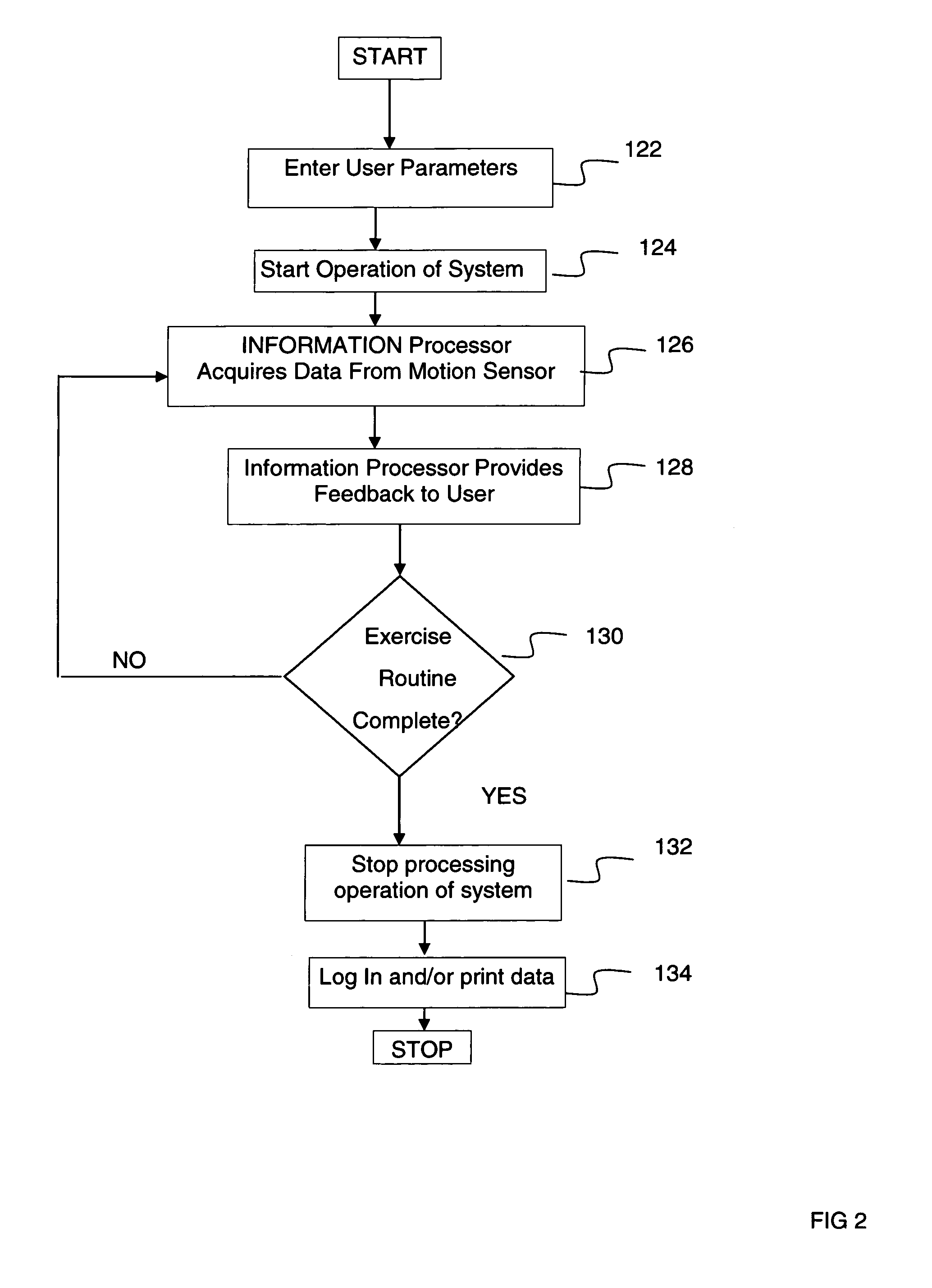Wearable sensor system with gesture recognition for measuring physical performance
a sensor system and gesture recognition technology, applied in the field of systems for quantifying physical performance, can solve the problems of inability to accurately measure inability to accurately quantify the physical performance of users, etc., to achieve convenient body perspiration absorption, reduce the effect of spurious signals, and stable affixing to the user's body
- Summary
- Abstract
- Description
- Claims
- Application Information
AI Technical Summary
Benefits of technology
Problems solved by technology
Method used
Image
Examples
Embodiment Construction
[0040]A wearable sensor system 98 with gesture recognition for measuring physical performance includes a wearable sensor 100 attached in the proximity of the user's fingers can provide novel and valuable information relating to the user's performance during strength and conditioning training exercise programs. This movement information generated by the sensor is the basis for quantification and real-time and / or post-exercise session user feedback for management of fitness, performance and rehabilitation programs. This same sensor system provides two distinct and valuable functions; the measurement of user performance and as a gesture recognition means for inputting instructions when the user's hand(s) are not in contact with, or in close proximity to, the base station to enhance the user-experience and improve accuracy and reliability.
[0041]Referring now to the drawings, the invention operates in “real time” and includes a wearable sensor that is a finger ring 100 or annulus (the “s...
PUM
 Login to View More
Login to View More Abstract
Description
Claims
Application Information
 Login to View More
Login to View More - R&D
- Intellectual Property
- Life Sciences
- Materials
- Tech Scout
- Unparalleled Data Quality
- Higher Quality Content
- 60% Fewer Hallucinations
Browse by: Latest US Patents, China's latest patents, Technical Efficacy Thesaurus, Application Domain, Technology Topic, Popular Technical Reports.
© 2025 PatSnap. All rights reserved.Legal|Privacy policy|Modern Slavery Act Transparency Statement|Sitemap|About US| Contact US: help@patsnap.com



